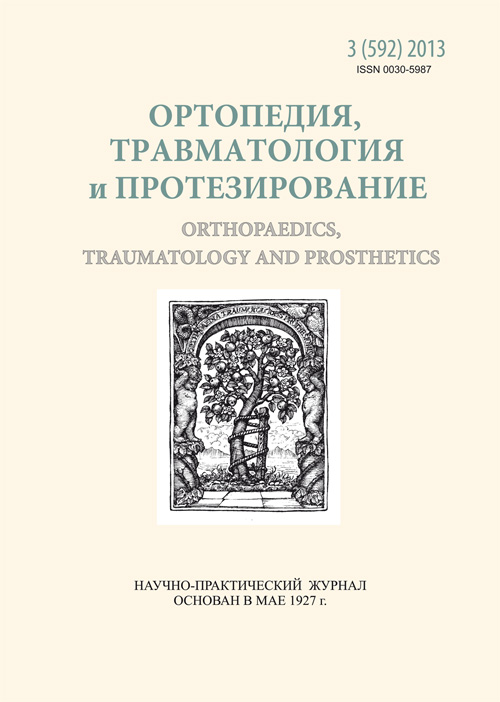Different friction pairs of hip prostheses
DOI:
https://doi.org/10.15674/0030-59872013366-69Keywords:
hip joint, arthroplasty, friction pairsAbstract
The authors describe the evolution of friction pairs of hip prostheses, point out advantages and shortcomings of each of them. Modern friction pairs, which ensure the best long-term results, are singled out.
References
- Clicking and squeaking: in vivo correlation of sound and separation for different bearing surfaces / D. Glaser, R. D. Komistek, H. E. Cates, M. R. Mahfouz // J. Bone Joint Surg. – 2008. — Vol. 90, Suppl. 4. — P. 112–120.
- Complication rate of ceramic components — an update // CeraNews. — 2012. — № 2. — P. 16–19.
- Revision of ceramic hip replacements for fracture of a ceramic component / F. Traina, E. Tassinari, M. De Fine et al. // J. Bone Joint Surg. — 2011. — Vol. 93 (24). — 147 р.
- Thirty years of experience with alumina-on-alumina bearings in total hip arthroplasty / D. Hannouche, A. Zaoui, F. Zadegan et al. // International Orthop. — 2011. — Vol. 35 (2). — P. 207–213.
Downloads
How to Cite
Issue
Section
License
Copyright (c) 2014 Volodymyr Filipenko

This work is licensed under a Creative Commons Attribution 4.0 International License.
The authors retain the right of authorship of their manuscript and pass the journal the right of the first publication of this article, which automatically become available from the date of publication under the terms of Creative Commons Attribution License, which allows others to freely distribute the published manuscript with mandatory linking to authors of the original research and the first publication of this one in this journal.
Authors have the right to enter into a separate supplemental agreement on the additional non-exclusive distribution of manuscript in the form in which it was published by the journal (i.e. to put work in electronic storage of an institution or publish as a part of the book) while maintaining the reference to the first publication of the manuscript in this journal.
The editorial policy of the journal allows authors and encourages manuscript accommodation online (i.e. in storage of an institution or on the personal websites) as before submission of the manuscript to the editorial office, and during its editorial processing because it contributes to productive scientific discussion and positively affects the efficiency and dynamics of the published manuscript citation (see The Effect of Open Access).














